So you’re a noob in the grilling game. And then you come across this line in your recipe “preheat the grill to medium heat” or “sear at high heat for 3 minutes.” You instantly get into confusion as you wonder what that means and how to set it.
Low, medium, and high heat are the temperature settings that you use to grill your food perfectly.
Join us below as we take you through the different grill temperatures—low, medium, and high—what they mean, what type of food to cook with each temperature setting, and other information relating to the grill temperatures.
The three MAIN temperature ranges explained:
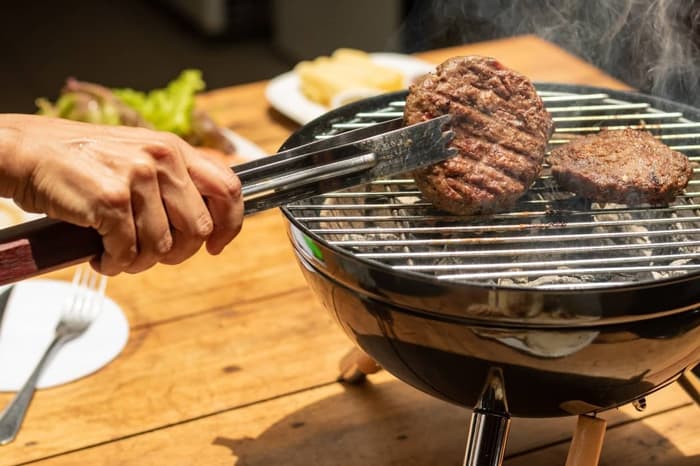
Low heat: 225 to 250 degrees
As you can easily guess, this is the lowest temperature range for grilling. It falls between 225 and 250 degrees and offers the perfect temperature for smoking meat, authentic barbecue. It subjects your meat to a long cooking process to help keep as much of the meat flavor as possible.
Some ideal recipes to grill at a low heat setting include pork shoulder, brisket ribs, shoulder clod, whole lamb, goat, and pigs.
Medium heat: 325 to 350 degrees
The medium means halfway between two extremes. And medium heat means halfway between the low and high temperatures. This heat range starts from 325 to 350 degrees and delivers well-cooked food with a lot of flavors.
The medium heat is suitable for preparing a wide range of recipes to perfection. It works well for both direct and indirect grilling. It is also ideal for smoke-roasting meats.
Some of the recipes that will come out well with this temperature range include roasts, poultry, whole fish port loin, and veggies likes cabbages, cauliflower, and onions.
High heat: 450 to 600 degrees
It’s the highest grill heat can go and sits between 450 and 600 degrees. High heat allows for rapid cooking and searing hot temperatures. You use it for direct grilling.
It works well for grilling a wide range of foods that benefit from a quick and hot cook. Examples include steak to fish, steaks, chicken breasts, pizza, and low and high moistures fruits and veggies.
Other temperatures you should know about:
Apart from these main temperature settings, there exist different temperatures that you should also know about if you want to become a pro griller.
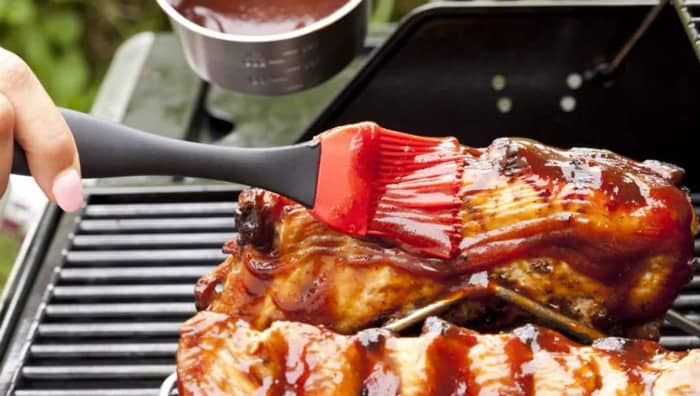
They include:
Medium-low heat: 275 to 300 degrees
Medium-low heat occurs at temperatures between 275 and 300 degrees, so it’s naturally in the middle of Low and Medium heat settings.
It’s the best setting for authentic barbecue and indirect grilling.
Medium-low heat also offers you a great way to cook an extensive list of ribs as well as pork shoulder—it grills the meat to perfection while still enabling it to retain more of the natural juices.
Medium-high heat: 375°F to 450°F
This temperature range sits between Medium and High heat temperatures ranges. It’s perfect for various grilling styles, including indirect grilling, direct grilling, smoke-roasting plancha, and salt slab grilling.
Typical foods you should grill using medium-high heat include planked fish, chicken pieces, and giant vegetables.
If you’re more inclined to different grilling techniques than the type of food to grill, then medium-high heat is for you.
Incendiary heat: 650 degrees or higher
This one sits above High heat and starts at anything from 650+ degrees. Since this is the highest temperature setting on the grill temperature chart, you can guess how boiling it gets.
Incendiary works best for foods that require direct grilling or infrared grilling. Food subject to this temperature tends to feel a bit tough for some people. But they’re overall quite tasty.
Some of the foods you can prepare at this temperature include chops and searing steaks.
What temp should you grill at?
We have prepared the following quick grilling temperature summary to help you quickly decide the correct type of temperature to use for different types of food grilling recipes.
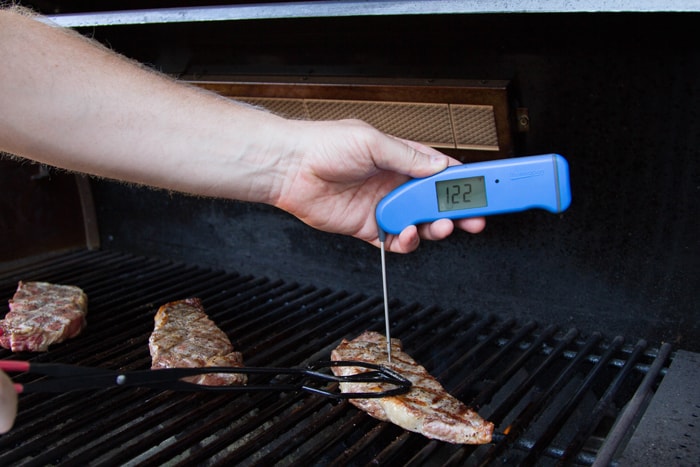
Grilling temperature chart:
| Heat setting | Temperature (°F) | Foods to cook |
| Low | 225 to 250 degrees | Slow-cooked meat |
| Medium-low | 275 to 300 degrees | True barbecue and indirect grilling |
| Medium | 325 to 350 degrees | Direct/indirect grilling, smoke-roasting |
| Medium-high | 375 to 450 degrees | Direct and indirect grilling |
| High | 450 to 600 degrees | Searing steak |
| Incendiary | 650 degrees and higher | Direct grilling/infrared grilling |
How to check your grill temperature?
To ensure you’re using the correct temperature setting for the meat you’re grilling, and you’ll need a way to gauge the temperature of your grill.
The most commonly used method of gauging the grill temperature involves holding your hand over about 3 inches above the grate and see how many seconds you hold up the heat. However, this method might not be 100% accurate, plus it’s not a safe way to check the grill temperatures.
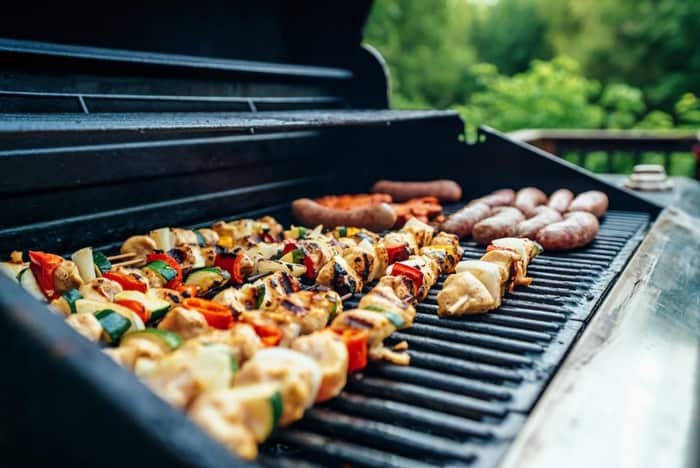
A grilling thermometer makes a more accurate and safer method for gauging the grilling temperatures.
The hand-test method
For this method, you place your hand approximately three inches above the grate. The shorter the period your hand can stand the heat, the higher the temperatures.
If you can hold your hand for only two-three seconds, that’s a hot grill at High temperature. If you can keep it for five-six seconds, that’s medium heat. Your hands can withstand a low heat grill for 10 to 12 seconds.
As we have just mentioned above, this method isn’t safe as you could get severe burns trying to gauge your grill temperature.
Using a grilling thermometer
This method involves using a grilling thermometer to safely and accurately determine how hot your grill is.
If your grill already comes with a built-in thermometer, that’s easier for you because you won’t need to spend your money on a separate thermometer.
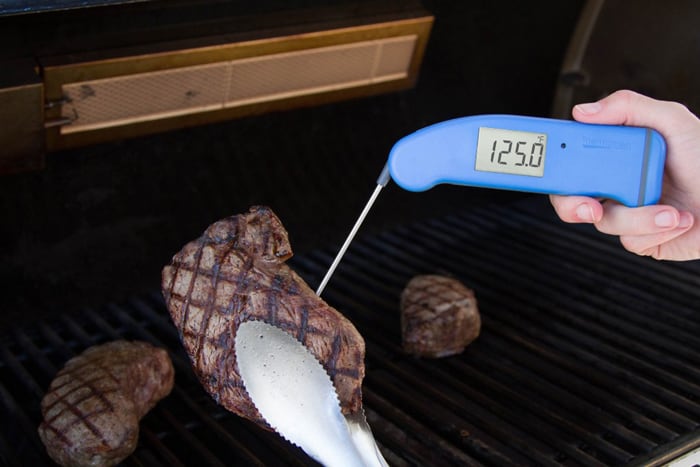
If you don’t have a built-in thermometer, you’ll need to get a standalone thermometer. It’s readily available, highly affordable, and straightforward to use.
How do you control your grill temperature?
Now that you know how to check the temperature on your grill, you’ll also need to know how to adjust it to the perfect range, as indicated on your grilling recipe.
The grilling method can vary depending on whether you’re using a charcoal or gas/propane grill.
Adjusting the charcoal grill temperature
Most people often have a hard time controlling the temperature on a wood or charcoal grill to their preferred. But this is nothing complicated as most beginners tend to think.
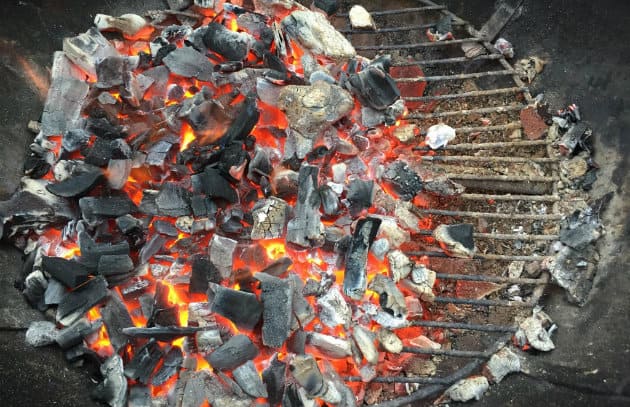
These three proven methods will help you bring the temperature up or down to your preferences:
Method 1: Alter the coals
The position of the coals determines the temperature level in your grill. If you want high heat, put the coals together. If you’re going to bring the temperatures down, spread out your briquettes. It’s that simple!
Method 2: Adjust the vents
The vent method involves controlling the airway to adjust the flow of oxygen into your grill. The more oxygen you let into your grill, the more coals will burn and the more heat they produce.
If you want to lower the temperatures, close the top vent a little so that little oxygen gets in. Opening the vent wider fires up the temperatures. If you want high heat, open both the top and bottom vents.
Method 3: Adjust the racks
You can also play with the rack to help adjust your charcoal or wood grill. These grills usually feature an adjustable rack that you can lower to bring your meat closer to the burning coals and increase the grilling heat. Raising the rack will also place your meat far from the heat and reduce the temperatures.
Adjusting gas grill temperature
Unlike the charcoal grill, a gas grill is less challenging to control its temperatures. You need to use the well-labeled knobs to set the temperatures to your desired range. You’ll only need to ensure you know the temperature readings for different heat levels to help you select the right heat level for your grilling recipe.
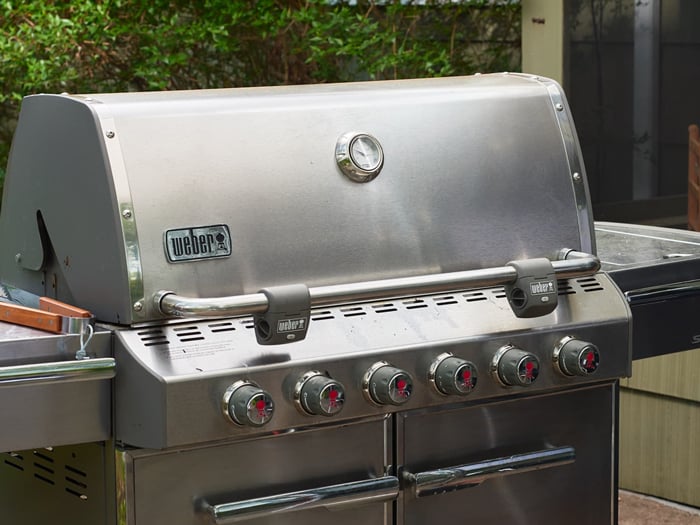
Final verdict
That’s it about the grilling temperatures. The different temperatures deliver varying heat levels to help you cook your food as your grille recipe recommends. Whether to use the low, medium, or high temperatures will depend on the type of food you’re grilling.
After reading this guide, you should know an easy time interpreting what low, medium-low, medium, medium-high, and high grill temperatures mean when you see them on your recipe.

